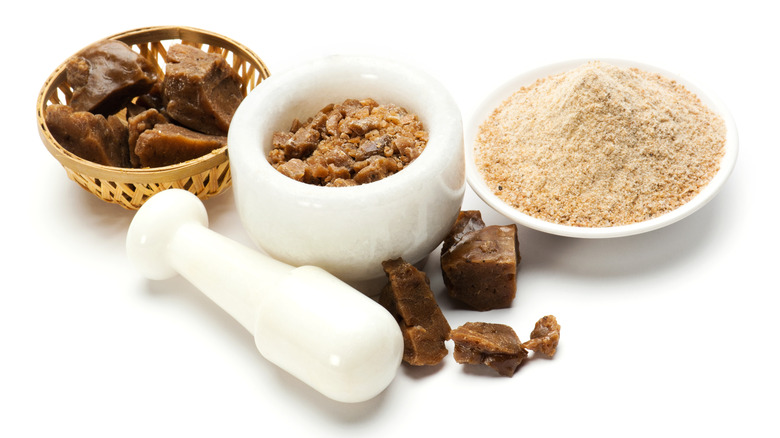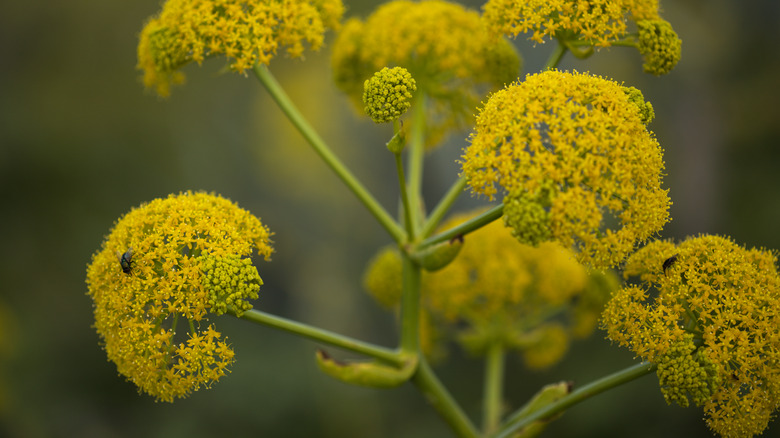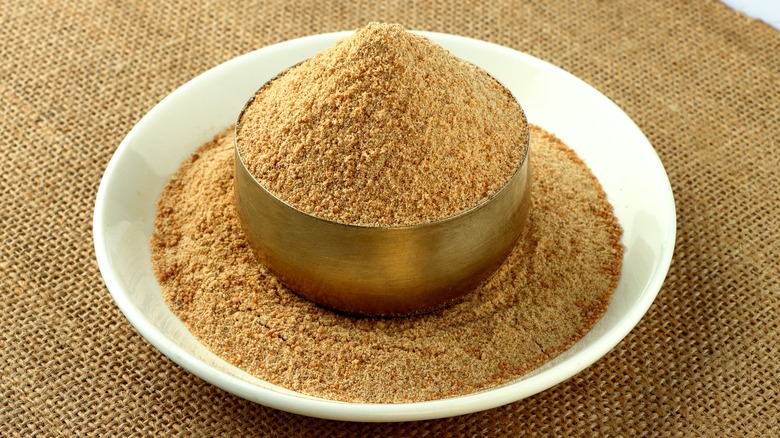The Staple Indian Spice You Should Have In Your Pantry
Spices are the heart and soul of Indian cooking. Just ask Madhur Jaffrey, whose seminal 1973 book, "An Invitation to Indian Cooking," introduced many Westerners to India's flavors and culinary techniques. The Delhi-born chef tells MasterClass, "For Indians, spices are like paints in a paint box." As essential as spices are to cuisine on the Asian subcontinent, many Americans would be hard-pressed to name any type of Indian spice aside from curry powder, which is not a spice at all, but rather a blend of many spices with no strict definition.
Some Indian spices have recently gained more recognition in Western kitchens, particularly turmeric. However, this may have more to do with the spice's anti-inflammatory properties, making it just as popular as a wellness aid as a culinary one. Madhur Jaffrey also speaks to MasterClass about the virtues of cumin, coriander, and nutmeg, all of which are common items in American grocery stores. However, there is one spice praised by Jaffrey and Indian chefs across the globe that you're less likely to have heard of but is essential for creating authentic Indian flavor ... asafetida.
What is asafetida?
Asafetida, also known as hing in Hindi, is derived from the resin of ferula, a type of plant in the same family as celery and fennel (via Botano). According to NPR, the English moniker asafetida is derived from the Latin for fetid, and it went by the derogation "devil's dung" by some Europeans due to its potent smell, which is likened to sulfur and onions. However, if you use it properly, the harsh smell does not translate to the final dish, but more on this in a moment.
Asafetida is not native to India, having actually originated in the region of Iran and Afghanistan. NPR notes that Mughals from the Middle East introduced the spice to India in the 1500s, where its use became prevalent. In addition to its culinary uses, asafetida is also used in traditional herbal medicine, believed to have a wide array of ameliorative properties. In India, it has been used to combat kidney stones, bronchitis, and flatulence, which is why it's often added to legumes. The Egyptians also use it as a diuretic. In any case, it's a joy to cook with as long as you know what you're doing.
How to cook with asafetida
While many balk at the powerful smell of asafetida, the aroma does not accurately reflect the flavors achieved by cooking with this unique spice. Writing for Bon Appétit, chef and cookbook author Priya Krishna warns cooks not to sprinkle asafetida on food like salt or pepper, as the powder is quite bitter when raw. To properly use asafetida, you need first to cook it. Krishna recommends tempering the spice in a hot pan with oil or ghee. Madhur Jaffrey's MasterClass suggests using asafetida mixed in tadka: a blend of spices blended in hot ghee and used as a garnish. Krishna particularly highlights its use in dal, aloo gobi, and matar paneer.
When you cook asafetida, its sulfuric smell disappears, and the spice takes on a mild but complex flavor that NPR likens to a combination of leeks and garlic. They also note that it's a valuable substitute for Indians that adhere to Ayurvedic medicinal practices, which forbid the consumption of garlic and onions. Bon Appétit adds that asafetida has the power to elevate the flavors of other spices in a dish, much like salt, and when you temper it in ghee, asafetida adds a distinct umami kick.
Where to get asafetida
Obtaining asafetida in the U.S. can be challenging since it is not commonly found at major grocery chains. For that reason, cookbook authors like Priya Krishna make asafetida optional in their recipes, though she encourages readers to get their hands on some (via Bon Appétit). If there is a specialty Indian grocery in your area, you can count on them to have asafetida. Otherwise, in this day and age, your most reliable bet would be to buy some asafetida through an online vendor.
Wherever you buy asafetida, it will come in powder form, and MasterClass notes that the ground resin is typically mixed with a small amount of wheat flour or rice flour if you are gluten-intolerant. Bon Appétit emphasizes the importance of storing your asafetida powder in an airtight container because the strong smell can overwhelm your cabinet. Krishna even suggests putting this container into a larger airtight container for double protection. Doing so should eliminate the unpleasantness associated with the raw spice and leave you free to enjoy asafetida without consequence.



